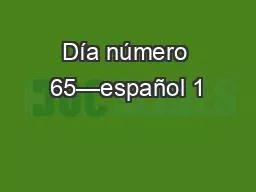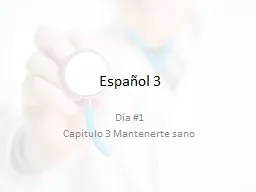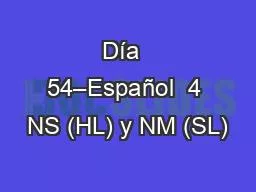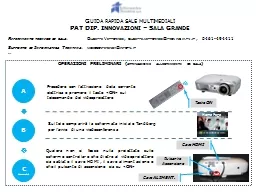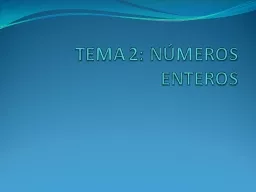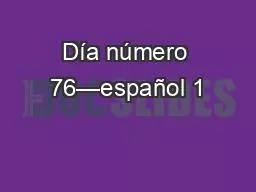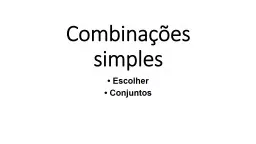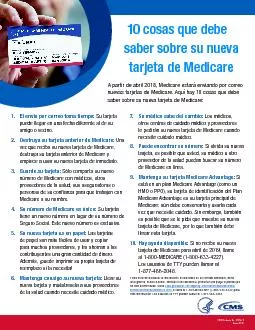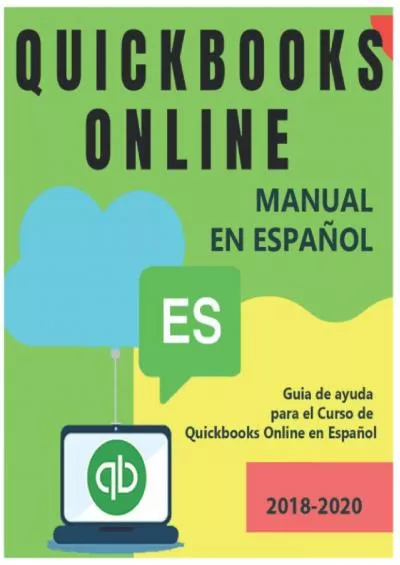PPT-Día número 65—español 1
Author : frostedikea | Published Date : 2020-06-22
El 28 de noviembre Horario Regular If you could see the potential within you it would amaze you to see all that you are capable of being Catherine Pulsifer
Presentation Embed Code
Download Presentation
Download Presentation The PPT/PDF document "Día número 65—español 1" is the property of its rightful owner. Permission is granted to download and print the materials on this website for personal, non-commercial use only, and to display it on your personal computer provided you do not modify the materials and that you retain all copyright notices contained in the materials. By downloading content from our website, you accept the terms of this agreement.
Día número 65—español 1: Transcript
Download Rules Of Document
"Día número 65—español 1"The content belongs to its owner. You may download and print it for personal use, without modification, and keep all copyright notices. By downloading, you agree to these terms.
Related Documents

